Blog Archives
MLB Player Profile: Nationals Pitcher Jordan Zimmermann
Like us on Facebook here
Wednesday January 23rd, 2013

Jordan Zimmermann is heading into Arbitration shortly with the Nats coming off of his best year in the Major Leagues with a 12-8 Record. For his career, he is 24-26 with a 3.47 ERA. Zimmermann had Tommy John surgery in 2009 – and has come back stronger.
Bernie Olshansky (Baseball Writer): Follow @BernieOlshansky
Having his breakout season in 2012, Jordan Zimmermann has been a guy the Washington Nationals have been able to rely on. 27 years old in 2013, Zimmermann helps anchor the young Nationals rotation including Gio Gonzalez and Stephen Strasburg. The Nationals had success in 2012, winning the NL East and making the playoffs for the first time as a franchise. The Nationals got unlucky though, and were eliminated by the St. Louis Cardinals in the Division Series. This year the Nationals will hope to build on their 2012 performance, and Jordan Zimmermann will most likely be a big help.
One of the main reasons the Nationals were eliminated so early last season is because of the shutting down of Stephen Strasburg. In the middle of the season, I wrote about the pros and cons of shutting Strasburg down, and in the end the situation ended badly. Last year, the Nationals had a very strong rotation consisting of Strasburg, Zimmermann, Gonzalez, and Edwin Jackson. By shutting Strasburg down, the Nationals lost a quarter of their rotation and had to scramble when the Division Series went more than three games. Ross Detwiler got the start and Zimmermann had to come into the game in a relief role. There was no reason for this to have to happen. Protecting Strasburg was important, but in my opinion the Nationals overprotected him, which cost them dearly in the playoffs.
Jordan Zimmermann Flashback Highlights:
What Would Baseball be Like Without Tommy John Surgery?
Saturday July 7th, 2012

Sam Evans: Just in the 2012 season, more than thirty pitchers have lost their seasons due to Tommy John surgery. Even in an era where pitchers are congratulated for throwing just two hundred innings, the wear and tear on a pitchers arm still causes them to be forced to have Tommy John surgery. Some have tried to blame it on pitchers arm slots and delivery, but the truth is every pitcher is vulnerable. Obviously, Tommy John surgery is going to continue to be a big part of the game. But my question is: what would major league baseball be like without Tommy John surgery?
MLB reports features two tools that prove to be very useful when learning more about Tommy John surgery and the pitchers affected by it. First of all, the Tommy John surgery tracker, which you can find here, not only gives you an up to date look at the pitchers out with Tommy John (the latest being Daniel Hudson of the Diamondbacks) but it also tells you about Frank Jobe and how he saved Tommy John’s career. The other Tommy John resource MLB reports has to offer is a story that Johnny Anderson, a Toronto Blue Jays player wrote about his two Tommy John surgeries-you can find that here. Read the rest of this entry
Why the Washington Nationals Will Make the Playoffs in 2012
Thursday June 21st, 2012
Bernie Olshansky: The last time the city of Washington D.C. saw a World Series trophy was in 1924. That was the work of the Washington Senators with the help of Walter “Big Train” Johnson. Although this year’s version of the team doesn’t have a veteran baseball legend, they do have a couple budding superstars. First is Stephen Strasburg. The first-overall pick of the 2009 draft, Strasburg made an enormous impact in his first career start and most of the 2010 season, but ended up on Dr. Lewis Yocum’s table towards the end, and missed most of the 2011 season. Thankfully for the Nationals, Strasburg is back and better than ever, posting an 8-1 record and a 2.45 ERA (before Wednesday’s win versus Tampa Bay: 7IP 5H 2ER 10K and got the win). Unfortunately for the Nationals, Strasburg is on an innings limit this year to protect his young and fragile arm, so he probably won’t be available to start games come September and October.
Thankfully for the Nationals, they have a very deep pitching staff. Strasburg is backed up by Gio Gonzalez, who the Nationals traded for this winter, Jordan Zimmermann, and also newly acquired Edwin Jackson. Gonzalez has finally come into his own after having some pretty decent seasons in Oakland. He has almost identical numbers to Strasburg with an 8-3 record with a 2.52 ERA. With numbers like these at his young age, a Cy Young or two may be in his future. Gonzalez has no innings limit, so he will most definitely be the anchor to the rotation down the stretch. An option for the Nationals if they have a comfortable lead in their division (which is weak as of now… I’ll cover that later), would be to move Strasburg to the bullpen in late August or early September and have him in the rotation for the playoffs. Read the rest of this entry
Where Will C.J. Wilson Pitch in 2012?
Thursday November 3, 2011
Sam Evans: Seven years ago, it looked like C.J. Wilson might never pitch in the big leagues after missing the 2004 season due to injury. Fast forward to the 2011 offseason, and he is the most desired starting pitcher on the free agent market. He has been the Rangers best starter for the last two years. Now, Rangers fans have to wonder if he’ll be back in Texas in 2012.
C.J. Wilson was drafted out of Loyola Marymount University by the Texas Rangers in the fifth round of the 2001 Draft. The next couple years showed signs of promise for Wilson as he moved all the way up to Double-A, after just one year playing in the lower minors. Unfortunately, he needed Tommy John Surgery which kept him out for parts of the 2003 season, and all of the 2004 season. In 2005, he pitched in 48 innings for the Rangers but posted a 6.94 ERA. From 2006-2006, Wilson pitched out of the bullpen for the Rangers. He was never spectacular but he recorded 52 saves and gave the Rangers an above-average bullpen arm.
 Before the 2010 season, Wilson, behind the support of pitching coach Mike Maddux, earned a role in the Rangers starting rotation. Everything took off from there as Wilson became the Rangers best starter and he has been their best pitcher the last two years. He has posted an ERA under 3.35 these last two years while throwing over 420 innings. He has been one of the best pitchers in baseball the last two years despite pitching half of his games at the hitter’s paradise also known as The Ballpark in Arlington.
Before the 2010 season, Wilson, behind the support of pitching coach Mike Maddux, earned a role in the Rangers starting rotation. Everything took off from there as Wilson became the Rangers best starter and he has been their best pitcher the last two years. He has posted an ERA under 3.35 these last two years while throwing over 420 innings. He has been one of the best pitchers in baseball the last two years despite pitching half of his games at the hitter’s paradise also known as The Ballpark in Arlington.
 The main knock on Wilson is that he can’t win the big game. This is a real issue because most teams willing to shell out the big money for Wilson are likely playoff contenders. I think that part of this has just been bad luck for Wilson. Another factor might be that he has started 77 games over the last two years. I think this recent postseason Wilson was just exhausted from the regular season. I think that some teams will look at Wilson differently after his performances this postseason but it shouldn’t be a huge issue.
The main knock on Wilson is that he can’t win the big game. This is a real issue because most teams willing to shell out the big money for Wilson are likely playoff contenders. I think that part of this has just been bad luck for Wilson. Another factor might be that he has started 77 games over the last two years. I think this recent postseason Wilson was just exhausted from the regular season. I think that some teams will look at Wilson differently after his performances this postseason but it shouldn’t be a huge issue.
C.J. Wilson is currently a free agent and the best starter available.The Nationals are rumored to be interested and they scouted Wilson in September this year. I think that Washington might be a good fit for Wilson to mentor young studs Stephen Strasburg, Brad Peacock, and Jordan Zimmerman. However, I don’t know if the Nationals really can compete with the other teams on a financial basis.If they could come up with the money ( they do have one of the richest owners in baseball) then I’d expect them to compete with the other top bidders.
The Yankees don’t seem to be too interested in Wilson but they might look elsewhere for the front of the line starter. In October, it was reported that the Yankees prefer Yu Darvish to C.J. Wilson. I think this is crazy that they would value a 25-year-old who hasn’t thrown one MLB pitch over a 31-year-old who has been worth more WAR than any Yankees starter under 300 pounds. Yet, according to Joel Sherman, one Yankees decision-maker considers Wilson a #4 starter on a championship team.
Other dark horse candidates for the Wilson bidding include the Royals, Cubs, Marlins, Blue Jays and Red Sox. The most likely team to land Wilson is the Texas Rangers. C.J. has made it clear that he wants to pitch for the Rangers. Wilson was recently quoted saying that there is a “great chance” that he would be pitching for the Rangers next year.
As for how much money he’ll get, I don’t think Wilson will get a $100M deal- but $85 million isn’t out of the question. Wilson sounds like he shouldn’t take too long to make up his mind on who to sign with. The odds are that we will see C.J. Wilson back in a Rangers jersey not only next year, but for many years to come.
 ***Today’s feature was prepared by our Baseball Writer, Sam Evans. We highly encourage you to leave your comments and feedback at the bottom of the page and share in the discussion with our readers. You can also follow Sam on Twitter.***
***Today’s feature was prepared by our Baseball Writer, Sam Evans. We highly encourage you to leave your comments and feedback at the bottom of the page and share in the discussion with our readers. You can also follow Sam on Twitter.***
Please e-mail us at: MLBreports@gmail.com with any questions and feedback. You can follow us on Twitter and become a fan on Facebook . To subscribe to our website and have the daily Reports sent directly to your inbox, click here and follow the link at the top of our homepage.
Strasburg-mania Returns to the Nationals September 6th
Saturday September 3, 2011
Rob Bland (Intern- MLB reports): Stephen Strasburg burst onto the MLB scene with the Washington Nationals in his first start on June 8, 2010 against the Pittsburgh Pirates. In his 7 inning gem, he struck out 14 batters with 0 walks, and only 4 hits allowed. Throughout the rest of the 2010 season, he relied on a fastball that averaged 97.3 mph. Strasburg also possesses a hard biting, 82 mph curveball and a 90 mph changeup. His 2010 season came to a grinding halt on August 21st that year, when he left a game against the Philadelphia Phillies in which he was dominating with elbow tightness. The Nationals’ front office and coaches all held their breath until after Strasburg’s MRI, which revealed a torn ulnar collateral ligament. Stephen Strasburg required Tommy John Surgery and would be on the shelf for a year.
 Strasburg had been previously dubbed as the best pitching prospect ever. Strasburg was drafted #1 overall out of San Diego State University in 2009 after what is arguably one of the best college careers for a pitcher of all time. Strasburg signed a $15.1 million dollar bonus just 77 seconds before the deadline that year. In the 2009 season leading up to the draft, Strasburg was pretty much unhittable. In 109 innings, he gave up only 59 hits and 19 walks, compared to 195 strikeouts.
Strasburg had been previously dubbed as the best pitching prospect ever. Strasburg was drafted #1 overall out of San Diego State University in 2009 after what is arguably one of the best college careers for a pitcher of all time. Strasburg signed a $15.1 million dollar bonus just 77 seconds before the deadline that year. In the 2009 season leading up to the draft, Strasburg was pretty much unhittable. In 109 innings, he gave up only 59 hits and 19 walks, compared to 195 strikeouts.
Strasburg’s 2011 season has seen him start off with his rehab in Viera, Florida at the Nationals’ spring training facility. His first official appearance on his rehab stint was for the Hagerstown Suns of the South Atlantic League in Single-A. Strasburg pitched 1 2/3 innings as he was under a strict pitch limit, and gave up one run with 4 strikeouts. Every 5th day the phenom has taken the mound for Hagerstown, then Potomac in the Advanced A-ball Carolina League. He also pitched in AAA with the Syracuse Chiefs and for the Harrisburg Senators in AA. His last start was the most impressive of all. On September 1st, Strasburg toed the rubber for Harrisburg against the Portland Sea Dogs, Boston’s AA affiliate. Through 6 innings, he faced one batter over the minimum, with only one hit and 4 strikeouts. He also hit 99 mph on the radar gun a number of times.
official appearance on his rehab stint was for the Hagerstown Suns of the South Atlantic League in Single-A. Strasburg pitched 1 2/3 innings as he was under a strict pitch limit, and gave up one run with 4 strikeouts. Every 5th day the phenom has taken the mound for Hagerstown, then Potomac in the Advanced A-ball Carolina League. He also pitched in AAA with the Syracuse Chiefs and for the Harrisburg Senators in AA. His last start was the most impressive of all. On September 1st, Strasburg toed the rubber for Harrisburg against the Portland Sea Dogs, Boston’s AA affiliate. Through 6 innings, he faced one batter over the minimum, with only one hit and 4 strikeouts. He also hit 99 mph on the radar gun a number of times.
Strasburg is expected to be called up to start on September 6th at home. He is actually tentatively scheduled to start 4 home games in the month, in part so that the Nationals can reap the benefits of increased gate revenue as well as being able to control game time starts in case of inclement weather.
 The fact that Strasburg took less than 12 months to be back on a mound is a testament to: a) the advances in the surgery, allowing for less rehab time; b) Strasburg’s work ethic; and c) Strasburg’s freakish body healing so quickly. Strasburg will surely be handled with kid gloves, as he has his entire professional career, never throwing over 100 pitches in a single start.
The fact that Strasburg took less than 12 months to be back on a mound is a testament to: a) the advances in the surgery, allowing for less rehab time; b) Strasburg’s work ethic; and c) Strasburg’s freakish body healing so quickly. Strasburg will surely be handled with kid gloves, as he has his entire professional career, never throwing over 100 pitches in a single start.
Strasburg seems to be healthy, and will be looking to be as dominant as his early career has shown. With ultra prospect Bryce Harper and young phenoms like Strasburg, Drew Storen and Ryan Zimmerman, including recently drafted Anthony Rendon and Matt Purke, the future actually looks bright for a franchise that has been hurting for a winner. With a growing fan base (and likely taking fans from the lowly Orioles), this young crop of players look to take the Nationals franchise from laughingstock to a true contender in the tough NL East.
prospect Bryce Harper and young phenoms like Strasburg, Drew Storen and Ryan Zimmerman, including recently drafted Anthony Rendon and Matt Purke, the future actually looks bright for a franchise that has been hurting for a winner. With a growing fan base (and likely taking fans from the lowly Orioles), this young crop of players look to take the Nationals franchise from laughingstock to a true contender in the tough NL East.
Look for Strasburg’s first start of the season on September 6 against the LA Dodgers. Strasburg is a true rare talent that only comes around once a generation. So if you ever get a chance to see him live, I highly recommend you do so, because you could be a witness to history.
***Today’s feature was prepared by our Intern, Rob Bland. We highly encourage you to leave your comments and feedback at the bottom of the page and share in the discussion with our readers. You can also follow Rob on Twitter.***
Please e-mail us at: MLBreports@gmail.com with any questions and feedback. You can follow us on Twitter and become a fan onFacebook . To subscribe to our website and have the daily Reports sent directly to your inbox , click here and follow the link at the top of our homepage.
August 15th Deadline to Sign MLB Draft Picks: 1 Week Away
Monday August 8, 2011
MLB reports: A popular topic on the Reports is the annual MLB Draft. Readers love to learn about baseball prospects and future stars. On June 6th, we summarized the first-round MLB selections and analyzed each player as selected by their respective club. With the excitement of the draft still in the air, the August 15th deadline to sign each drafted player is only 1 week away.
A quick recap of the draft rules for everyone. Players that were drafted by MLB teams this year must sign with their respective club by August 15th. If unsigned, the player will enter next year’s draft if eligible. In order to re-select the same player in a subsequent year, the team would need the permission of the previously drafted player.
 Another twist to the draft is that if a team is not successful in signing a pick by August 15th, the team would receive a compensation pick in the following year’s draft. For a player drafted in the first or second round that goes unsigned, the team would receive the same slot pick the following year as compensation plus one. For a player not signed in the third round, a compensation pick would be given in a supplemental round between the third and fourth rounds. So for example, the National drafted Aaron Crow with the 9th overall pick, 1st round of the 2008 MLB draft. When Crow did not sign, the National received as compensation the 10th overall pick in the 2009 draft, used to draft current closer Drew Storen, in addition to their existing 1st round pick (1st overall, which was used to take phenom Stephen Strasburg). However, if a team is unable to sign the player taken with a compensatory pick, the team would not receive another compensation pick in following years. Thus a team gets one chance to make-up a pick, so they better be sure they draft a signable player.
Another twist to the draft is that if a team is not successful in signing a pick by August 15th, the team would receive a compensation pick in the following year’s draft. For a player drafted in the first or second round that goes unsigned, the team would receive the same slot pick the following year as compensation plus one. For a player not signed in the third round, a compensation pick would be given in a supplemental round between the third and fourth rounds. So for example, the National drafted Aaron Crow with the 9th overall pick, 1st round of the 2008 MLB draft. When Crow did not sign, the National received as compensation the 10th overall pick in the 2009 draft, used to draft current closer Drew Storen, in addition to their existing 1st round pick (1st overall, which was used to take phenom Stephen Strasburg). However, if a team is unable to sign the player taken with a compensatory pick, the team would not receive another compensation pick in following years. Thus a team gets one chance to make-up a pick, so they better be sure they draft a signable player.
The story of signing MLB draft picks does not usually boil down to who signed, but rather who did not sign. Draftees usually wait to the final hour to sign their contracts, minutes to the midnight deadline. Sizeable contracts are handed out at the deadline, as players and agents attempt to one-up one another. With the current MLB collective bargaining agreement set to expire on December 11, 2011, players and agents realize that future rookie contracts may be limited in a hard-cap, set-salary structure arrangement. Thus many players would be well advised to sign their first professional contracts this year, rather than face the risk of the unknown future salary structure of rookies.
The biggest contract given to a 1st round pick this year so far has been Trevor Bauer, who signed a 4-year, $7 million contract with the Diamondbacks. Other 2011 1st round picks to sign contracts already include Cory Spangenberg with the Padres, C.J. Cron with the Angels, Sonny Gray with the Athletics, Kolten Wong with the Cardinals, Sean Gilmarten with the Braves, Joe Panik with the Giants, Jake Hager with the Rays and Kevin Matthews with the Rangers. To keep up-to-date on the 2011 1st round and supplemental MLB Draft picks signings, please click onto MLB Trade Rumors, a great baseball site that is maintaining a draft pick signing page.
As August 15th continues to approach, fans will continue to ask if and when the Pirates will sign Gerrit Cole, the 1st overall selection in this year’s draft. Dylan Bundy of the Orioles, Bubba Starling of the Royals, Anthony Rendon of the Nationals and so forth also remain out there. For all the anxious people worrying as to which players will sign, let us help alleviate your concerns. The majority of the top picks will sign with their squads before the deadline and will get good contracts. We will continue to cover the signing deadline and file a report when the final numbers are in. The signing period is like a game of musical chairs with a great deal of money being thrown around with pre-arranged partners. It will be interesting to see which draft picks are left standing without a contract in hand when the bell strikes midnight next week.
Please e-mail us at: MLBreports@gmail.com with any questions and feedback. You can follow us on Twitter and become a fan on Facebook . To subscribe to our website and have the daily Reports sent directly to your inbox , click here and follow the link at the top of our homepage.
Danny Espinosa,Washington Nationals: Hidden National Treasure
Monday June 27, 2011
MLB reports: With the shortage of quality second basemen in baseball, teams are always on the prowl for the next Roberto Alomar or Ryan Sandberg. We often hear the names Dustin Ackley and Neil Walker thrown around. Sitting quietly in Washington though is one of the better all-around second basemen in the game. With each home run, the secret is starting to get out of the bag. The Nationals keep winning games and building towards the Bryce Harper and Stephen Strasburg era. But before the next can’t miss prospects make their mark, Washington already has a rookie assaulting the MLB record books. His name: Danny Espinosa.
The 24-year old Espinosa was born in California and selected by the Nationals in the 3rd round of the 2008 draft. He made his major league debut last year and retained rookie eligibility in 2011. The heir apparent to the shortstop position from once incumbent Christian Guzman, Espinosa moved to second for 2011, took a hold of the job and ran with it. Considering he had to learn a new position on the fly, Espinosa’s production is that much more impressive.
Here is a look at Espinosa’s numbers during his time in the minors:
| Year | Tm | Lev | AB | R | H | HR | RBI | SB | CS | BB | SO | BA | OBP | SLG |
|---|---|---|---|---|---|---|---|---|---|---|---|---|---|---|
| 2008 | Vermont | A- | 64 | 8 | 21 | 0 | 4 | 2 | 2 | 17 | 17 | .328 | .476 | .359 |
| 2009 | Potomac | A+ | 474 | 90 | 125 | 18 | 72 | 29 | 11 | 74 | 129 | .264 | .375 | .460 |
| 2010 | 2 Teams | AA-AAA | 481 | 80 | 129 | 22 | 69 | 25 | 11 | 41 | 116 | .268 | .337 | .464 |
| 2010 | Harrisburg | AA | 386 | 66 | 101 | 18 | 54 | 20 | 8 | 33 | 94 | .262 | .334 | .464 |
| 2010 | Syracuse | AAA | 95 | 14 | 28 | 4 | 15 | 5 | 3 | 8 | 22 | .295 | .349 | .463 |
| 3 Seasons | 1019 | 178 | 275 | 40 | 145 | 56 | 24 | 132 | 262 | .270 | .365 | .455 | ||
Now let’s take a look at what Danny Espinosa has produced in the majors:
| Year | AB | R | H | 2B | 3B | HR | RBI | SB | CS | BB | SO | BA | OBP | SLG |
|---|---|---|---|---|---|---|---|---|---|---|---|---|---|---|
| 2010 | 103 | 16 | 22 | 4 | 1 | 6 | 15 | 0 | 2 | 9 | 30 | .214 | .277 | .447 |
| 2011 | 277 | 39 | 67 | 12 | 4 | 14 | 47 | 9 | 2 | 22 | 70 | .242 | .323 | .466 |
| 2 Seasons | 380 | 55 | 89 | 16 | 5 | 20 | 62 | 9 | 4 | 31 | 100 | .234 | .311 | .461 |
| 162 Game Avg. | 581 | 84 | 136 | 24 | 8 | 31 | 95 | 14 | 6 | 47 | 153 | .234 | .311 | .461 |
In addition to have a top-rated glove defensively, Espinosa has produced quite well offensively in the majors. He is on pace for an outstanding 30+ home runs with close to 100 RBIs. Middle-of-the order type numbers are what we are projecting, not the standard second base type production. As with many rookies, Espinosa still has a difficult time making contact and his BB/K ratio will require substantial improvement for him to develop into a batting champion one day. But the numbers in the minors show a great deal of promise. The power has come at an early stage for Espinosa, it is the balance of his offensive game that needs to be rounded into form.
As with any young players, it is difficult and somewhat unfair to have comparisons to establish major league players, let alone ones of the Hall of Fame variety. But Danny Espinosa is showing some Ryan Sandberg type qualities at the plate at an early age with his strong power bat. Second basemen traditionally have strong gloves and any production offensively would be considered a bonus. Players of the Danny Espinosa variety do not come along very often. Washington currently sits with a 40-39 record, above .500 as we near the All-Star break. With the team playing explosive baseball (7-3 in last 10, 22-13 at home), the baseball world is starting to turn its attention to Washington. At the forefront is rookie Danny Espinosa. A possible All-Star come next month, expect to see Espinosa in many All-Star games to come. Come one October soon, we expect to see Espinosa, Harper and Strasburg competing for a World Series title. The word is out on Danny Espinosa, who will form a core for the next decade in building Washington into the next powerhouse team.
Please e-mail us at: MLBreports@gmail.com with any questions and feedback. You can follow us on Twitter and become a fan on Facebook . To subscribe to our website and have the daily Reports sent directly to your inbox , click here and follow the link at the top of our homepage.
From Riggleman to Johnson: Davey is the New Sheriff in Washington
Saturday, June 25, 2011
MLB reports: According to several sources, the Nationals are set to announce the hiring of their new manager. Less than twenty-four hours after the abrupt resignation of Jim Riggleman (see yesterday’s feature), Mike Rizzo has apparently found the man for the job within the Nationals organization. Ex-Mets skipper, Davey Johnson is set to move from the front office to the dugout. Nationals fans couldn’t be happier.
| Year | Tm | Lg | G | W | L | W-L% | Finish |
|---|---|---|---|---|---|---|---|
| 1984 | New York Mets | NL | 162 | 90 | 72 | .556 | 2 |
| 1985 | New York Mets | NL | 162 | 98 | 64 | .605 | 2 |
| 1986 | New York Mets | NL | 162 | 108 | 54 | .667 | 1 |
| 1987 | New York Mets | NL | 162 | 92 | 70 | .568 | 2 |
| 1988 | New York Mets | NL | 160 | 100 | 60 | .625 | 1 |
| 1989 | New York Mets | NL | 162 | 87 | 75 | .537 | 2 |
| 1990 | New York Mets | NL | 42 | 20 | 22 | .476 | 2 |
| 1993 | Cincinnati Reds | NL | 118 | 53 | 65 | .449 | 5 |
| 1994 | Cincinnati Reds | NL | 115 | 66 | 48 | .579 | 1 |
| 1995 | Cincinnati Reds | NL | 144 | 85 | 59 | .590 | 1 |
| 1996 | Baltimore Orioles | AL | 163 | 88 | 74 | .543 | 2 |
| 1997 | Baltimore Orioles | AL | 162 | 98 | 64 | .605 | 1 |
| 1999 | Los Angeles Dodgers | NL | 162 | 77 | 85 | .475 | 3 |
| 2000 | Los Angeles Dodgers | NL | 162 | 86 | 76 | .531 | 2 |
| New York Mets | 1012 | 595 | 417 | .588 | 1.7 | ||
| Cincinnati Reds | 377 | 204 | 172 | .543 | 2.3 | ||
| Baltimore Orioles | 325 | 186 | 138 | .574 | 1.5 | ||
| Los Angeles Dodgers | 324 | 163 | 161 | .503 | 2.5 | ||
| 2038 | 1148 | 888 | .564 | 1.9 |
Unlike his predecessor, Davey Johnson is a proven winner. Johnson managed four teams in his career before accepting the Nationals position. As a big league manager, Johnson has a career record of 1148 wins and 888 losses, good for a .564 winning percentage. Johnson has finished 11 of his 14 seasons above .500. He won a World Series title in 1986 with the New York Mets. Looking further at the numbers, Johnson’s teams have finished first in their division five times and in second place on seven different occasion. Johnson wins everywhere he goes and the same will be expected as the new face of baseball in the nation’s capital.
With Stephen Strasburg on the mend and Bryce Harper slowly making the climb to the big leagues, the Nationals will have a strong talent base for Johnson to mold. The Nationals will be looking for its team to play “Daveyball” and try to recreate some of the Mets magic from 1986. That team was filled with young prospects that gelled together at the same time, sprinkled with key veterans. As Mike Rizzo continues to tinker with the roster, we could very well be seeing a Nationals playoff run by 2013. Coincidently, that will also be the year that new manager Davey Johnson’s contract is set to expire. Provided Johnson’s teams perform to expectations, his run in Washington will be far longer than that of Jim Riggleman.
Davey Johnson is known as a gamer. A man who played with his heart on his sleeve back in his playing days and as an intense competitor behind the bench. This is a man who refuses to lose. For an organization that seemingly refuses to win, Johnson is a breath of fresh air and should turn out to be the voice of a reason for an organization in dire need of direction. Bobby Valentine would have been a good choice as well (given the rumors surrounding him in the media). But the Nationals have their man. A former Manager of the Year (AL 1997) and World Series winner. Welcome to the new Nationals manager, Davey Johnson. Get ready to see a lot of W’s in Washington during the next few seasons.
Please e-mail us at: MLBreports@gmail.com with any questions and feedback. You can follow us on Twitter and become a fan on Facebook . To subscribe to our website and have the daily Reports sent directly to your inbox , click here and follow the link at the top of our homepage.
Jim Riggleman Resigns from the Nationals: Treason in Washington
Friday, June 24, 2011
MLB reports: June has apparently become the month in baseball to fire your coach if you are a MLB General Manager, or to quit your team if you are a manager. Follow along the coaching carousel:
-
June 8th: Texas Rangers fire hitting coach Thad Bosley and replace him with Scott Coolbaugh
-
June 9th: Florida Marlins fire hitting coach John Mallee and replace him with Eduardo Perez
-
June 10th: Oakland Athletics fire manager Bob Geren and replace him with Bob Melvin
-
June 14th: Houston Astros fire pitching coach Brad Arnsberg and replace with him Doug Brocail
-
June 17th: Cleveland Indians fire hitting coach John Nunnally and replace him with Bruce Fields
 It looks like where there is smoke, there is fire. A lot of it apparently in the coaching ranks of baseball. Teams were getting nervous and to help jump-start their slumping players, several teams decided to change a coach rather than making wholesale roster moves, or let go of the manager and/or General Manager. On June 19th, the baseball world was stunned as manager Edwin Rodriguez of the Florida Marlins resigned and was replaced with 80-year old ex-Marlins manager Jack McKeon. Then yesterday, Jim Riggleman, manager of the Washington Nationals, got the same itch from the “quit bug” suffered by Rodriguez and announced that he was resigning his post. The captain jumped ship in Washington but unlike the Florida situation, Riggleman made his decision for all the wrong reasons. As a result, he may never coach again in baseball.
It looks like where there is smoke, there is fire. A lot of it apparently in the coaching ranks of baseball. Teams were getting nervous and to help jump-start their slumping players, several teams decided to change a coach rather than making wholesale roster moves, or let go of the manager and/or General Manager. On June 19th, the baseball world was stunned as manager Edwin Rodriguez of the Florida Marlins resigned and was replaced with 80-year old ex-Marlins manager Jack McKeon. Then yesterday, Jim Riggleman, manager of the Washington Nationals, got the same itch from the “quit bug” suffered by Rodriguez and announced that he was resigning his post. The captain jumped ship in Washington but unlike the Florida situation, Riggleman made his decision for all the wrong reasons. As a result, he may never coach again in baseball.
The inside story behind Riggleman leaving the Nationals was that he requested some sort of meeting from General Manager Mike Rizzo to discuss his long-term future in Washington. When Rizzo refused to discuss his contract status, Riggleman departed from the team and resigned his position as manager. Essentially Riggleman did not like the rules of the game, so in a childlike manner he took his ball and went home, so to speak.
“It’s been brewing for a while,” said Riggleman. “I know I’m not Casey Stengel, but I do feel like I know what I’m doing. It’s not a situation where I felt like I should continue on such a short leash.”
No Jim. You are certainly not Casey Stengel. Let’s take a look shall we, at Riggleman’s career managerial record:
| Year | Age | Tm | Lg | G | W | L | W-L% | Finish |
|---|---|---|---|---|---|---|---|---|
| 1992 | 39 | San Diego Padres | NL | 12 | 4 | 8 | .333 | 3 |
| 1993 | 40 | San Diego Padres | NL | 162 | 61 | 101 | .377 | 7 |
| 1994 | 41 | San Diego Padres | NL | 117 | 47 | 70 | .402 | 4 |
| 1995 | 42 | Chicago Cubs | NL | 144 | 73 | 71 | .507 | 3 |
| 1996 | 43 | Chicago Cubs | NL | 162 | 76 | 86 | .469 | 4 |
| 1997 | 44 | Chicago Cubs | NL | 162 | 68 | 94 | .420 | 5 |
| 1998 | 45 | Chicago Cubs | NL | 163 | 90 | 73 | .552 | 2 |
| 1999 | 46 | Chicago Cubs | NL | 162 | 67 | 95 | .414 | 6 |
| 2008 | 55 | Seattle Mariners | AL | 90 | 36 | 54 | .400 | 4 |
| 2009 | 56 | Washington Nationals | NL | 75 | 33 | 42 | .440 | 5 |
| 2010 | 57 | Washington Nationals | NL | 162 | 69 | 93 | .426 | 5 |
| 2011 | 58 | Washington Nationals | NL | 74 | 37 | 37 | .500 | 3 |
| San Diego Padres | 291 | 112 | 179 | .385 | ||||
| Chicago Cubs | 793 | 374 | 419 | .472 | ||||
| Seattle Mariners | 90 | 36 | 54 | .400 | ||||
| Washington Nationals | 311 | 139 | 172 | .447 | ||||
| 1485 | 661 | 824 | .445 |
 Jim Riggleman in his twelve-year managerial career has a record of 661-824, .445 winning percentage. During his three years in Washington, Riggleman finished with a 139-172 record. Riggleman’s best year was 1998 with the Cubs, where he had a 90-73 record and his team finished second in their division. He had a 73-71 record in 1995 with the Cubs and was floating at .500 this year, with a Nationals team sitting at 37-37. The man is clearly no baseball Houdini. While some may argue that Riggleman was not given much to work with at each of his stops for the most part, the man clearly was not able to get much out of his teams at most stops. A great manager should be able to turn out something out of nothing. But alas, this was not one of Riggleman’s gifts as a manager.
Jim Riggleman in his twelve-year managerial career has a record of 661-824, .445 winning percentage. During his three years in Washington, Riggleman finished with a 139-172 record. Riggleman’s best year was 1998 with the Cubs, where he had a 90-73 record and his team finished second in their division. He had a 73-71 record in 1995 with the Cubs and was floating at .500 this year, with a Nationals team sitting at 37-37. The man is clearly no baseball Houdini. While some may argue that Riggleman was not given much to work with at each of his stops for the most part, the man clearly was not able to get much out of his teams at most stops. A great manager should be able to turn out something out of nothing. But alas, this was not one of Riggleman’s gifts as a manager.
The reality of baseball is that coaches and managers get let go by teams all the time, as evidenced by the amount of activity among teams this month. Managers and coaches also quit sometimes. Rodriguez left his position in Florida, as did Riggleman in Washington. But when a coach leaves a team, the intention and circumstances behind the resignation are crucial. For it is the story behind the announcement that will ultimately dictate if and when said manager receives another crack at a big league post. Gonzalez left his position for the better of his team. The Marlins were floundering and in the interests of having his team recover, Gonzalez felt that a change was needed. While that should have been up to the team to decide, at least Gonzalez acted in what he felt was best for his team. His compassion and sentiments to the organization means that Gonzalez should continue coaching in baseball. In the case of Jim Riggleman, that door has been shut close in my opinion.
The Nationals were not happy to say the least with the news. “I was always taught that one of the cardinal rules of baseball was that no individual can put his interests before those of the team,” was the sentiments expressed by Mike Rizzo. The GM is right in this case. Many MLB managers are on one-year contracts like Jim Riggleman was in 2011. Some have a chance at long careers with their teams, while others are seen as more temporary solutions. In Riggleman’s case, he was likely more of the temporary variety. But players, coaches and managers are in this position all the time. Many veteran players sign for one-year deals, knowing full well that they will not be with a team beyond the period. The same goes for managers, who can often be brought in to manage a young team and eventually be replaced with a fresh voice as the team looks to grow and change direction. That is the rules of the game and Jim Riggleman is not better than the system. If a player was to leave his team mid-season due to contractual issues, he would be seen as selfish. Jim Riggleman as manager is no different. He let his organization, players and fans down, by jumping ship. He put his own financial and security needs ahead of those of the people around him. So Riggleman wanted a long-term contract? The best way to do it was to right the ship and lead the Nationals to their strongest possible record this year. Instead, Riggleman has likely blacklisted himself from the game and lost the chance to manage again.
his interests before those of the team,” was the sentiments expressed by Mike Rizzo. The GM is right in this case. Many MLB managers are on one-year contracts like Jim Riggleman was in 2011. Some have a chance at long careers with their teams, while others are seen as more temporary solutions. In Riggleman’s case, he was likely more of the temporary variety. But players, coaches and managers are in this position all the time. Many veteran players sign for one-year deals, knowing full well that they will not be with a team beyond the period. The same goes for managers, who can often be brought in to manage a young team and eventually be replaced with a fresh voice as the team looks to grow and change direction. That is the rules of the game and Jim Riggleman is not better than the system. If a player was to leave his team mid-season due to contractual issues, he would be seen as selfish. Jim Riggleman as manager is no different. He let his organization, players and fans down, by jumping ship. He put his own financial and security needs ahead of those of the people around him. So Riggleman wanted a long-term contract? The best way to do it was to right the ship and lead the Nationals to their strongest possible record this year. Instead, Riggleman has likely blacklisted himself from the game and lost the chance to manage again.
 The 58-year old Riggleman does not have any excuses in my book. He was a bench coach for several years, including stints with the Dodgers and Mariners following his departure from the Cubs in 1999. He did not receive another managerial opportunity until 2008, where he was an interim manager with the Mariners. Again Riggleman received an interim managerial job with the Nationals the following year, but stayed on with the team until yesterday. Was he a lame-duck manager so to speak? Probably. But that had more to do with his managerial skills and overall record than anything else. Sure many people want job security, especially in baseball. But let’s keep this in perspective. There are only thirty MLB manager jobs out there. Period. Jim Riggleman had one but he threw it away. He wanted to be a long-term manager but yet was not prepared to do what it takes to get there. Nobody should be above the system. I would not expect the Nationals to give Riggleman a strong recommendation, or any sort of reference in that regard. Teams have long memories and will likely be very cautious with Riggleman, who is today seen as having acted as a “jilted lover.”
The 58-year old Riggleman does not have any excuses in my book. He was a bench coach for several years, including stints with the Dodgers and Mariners following his departure from the Cubs in 1999. He did not receive another managerial opportunity until 2008, where he was an interim manager with the Mariners. Again Riggleman received an interim managerial job with the Nationals the following year, but stayed on with the team until yesterday. Was he a lame-duck manager so to speak? Probably. But that had more to do with his managerial skills and overall record than anything else. Sure many people want job security, especially in baseball. But let’s keep this in perspective. There are only thirty MLB manager jobs out there. Period. Jim Riggleman had one but he threw it away. He wanted to be a long-term manager but yet was not prepared to do what it takes to get there. Nobody should be above the system. I would not expect the Nationals to give Riggleman a strong recommendation, or any sort of reference in that regard. Teams have long memories and will likely be very cautious with Riggleman, who is today seen as having acted as a “jilted lover.”
In looking to the future, it is interesting to read Riggleman’s take. “I’m not sure if I’ll get another opportunity,” Riggleman said. “But I’ll promise you I’ll never do a one-year deal again. I’m 58. I’m too old to be disrespected.” His comments show that he clearly does not get “it”. This is not a question of respect. There is no entitlement. The Nationals did not owe you a thing Jim. They named you manager by removing the interim label. You were working year-to-year. Your lifetime managerial record did not entitle you to more. You were very lucky to have a MLB manager’s position. Your actions were selfish and disrespectful. The truth is that the Nationals team and its fans are better off for this move. They did not want to have a manager in the dugout who did not want to be there. That would not benefit anyone and a fresh voice and style could prove to be beneficial in the long-term. There are rumors that team is looking at Davey Johnson for the position. Personally, I think that Bobby Valentine should be considered for the job. But no matter who the Nationals hire, the team will be heading in a new direction. Jim Riggleman has committed baseball treason. For that reason, it is time for him to walk the plank and plunge into the waters of baseball oblivion.
Please e-mail us at: MLBreports@gmail.com with any questions and feedback. You can follow us on Twitter and become a fan on Facebook . To subscribe to our website and have the daily Reports sent directly to your inbox , click here and follow the link at the top of our homepage.
Ten Things About Mike Leake and His Jump to the Majors
Saturday June 4, 2011
On the Reports, we will be occasionally featuring an up-and-coming baseball writer that has come to our attention and share their work with you, the readers. Part of our mandate at MLB reports is to provide the best baseball coverage and analysis in the business. MLB reports ultimately is designed to expose our readers to the world of baseball and the stories, facts, insights and profiles behind it. In order to meet this goal, we would like to give exciting young writers the chance to showcase their talents and provide a fresh pool of ideas to our site. In today’s feature, we are excited to have the Hall of Very Good as our guest writer with their feature post on Mike Leake. Putting aside Leake’s legal troubles this year, the HOVG took a look at Mike Leake’s major league debut and his jump directly from college to the show. If you are a fan of statistics and baseball data, you will love this one. Enjoy!
Hall of Very Good (Guest Writer for MLB Reports): Heading into the 2010 season, many baseball analysts and writers seemed to be split as to which hotshot National League rookie will be taking home the Rookie of the Year award following this season.
And why wouldn’t they be?
In our nation’s capital, Stephen Strasburg has the makings of being every bit as impactful in his inaugural season for the Nationals as Fernando Valenzuela was when he made the Dodgers starting rotation in 1981 or “Doc” Gooden was three seasons later for the Mets.
Down in Atlanta, Jason Heyward became, with one swing of the bat, just the 104th Major Leaguer since 1895 to go yard in his first career plate appearance.
One guy who wasn’t in any discussions was Reds starting pitcher Mike Leake, and dude was on the cusp of doing something that neither Strasburg nor Heyward could accomplish…beginning his career on a Major League roster.
When he took the mound against the Chicago Cubs Sunday, the 22 year-old righty became the first starting pitcher to leapfrog the Minors since Jim Abbott did it in 1988 for the Angels.
Here is some more stuff you might not have known about skipping the Minors and starting your career in the show.
$2,900,000
After being selected eighth overall by Cincinnati in last year’s draft…Arizona State’s Mike Leake received a $2.9 million signing bonus. By comparison, the top pick, Stephen Strasburg, received a $7.5 million dollar bonus by putting his John Hancock on the dotted line for Washington.
2000
Do you remember where you were September 30, 2000? Maybe you were bumping around town listening to “Minority” by Green Day. Perhaps you were waiting in line to purchase tickets for “Remember the Titans.” Me? I was at the theatre enjoying “Best in Show”. True story. But if you were Xavier Nady of the Pittsburgh Pirates, you were making your Major League debut and, in turn, becoming the last guy to jump the Minors until Mike Leake accomplished the feat.
84
Since 1915, 84 players have made the jump to the Major Leagues without stopping over in the Minors. However, since 1965 (the last year of the “Bonus Baby”…more on that next) only 22 guys have made the leap.
57
Of the aforementioned 84 who made the jump straight to the Majors, 57 were deemed “Bonus Babies”. A “Bonus Baby” was the group of amateur baseball players who went straight to the Major Leagues between the years 1947-1965. In accordance with the Bonus Rule, any amateur player who had received more than $4,000 in bonuses, entered into a contract. These players’ teams were required to keep them on the 40-man roster for a full season, preventing the player from spending time in the Minors. Notable “Bonus Babies” include Hall of Famers Al Kaline, Harmon Killebrew, Sandy Koufax and Jim “Catfish” Hunter. In 1965…Major League Baseball instituted the draft.
39
It should be no surprise that the position that has the most players to skip the Minors is pitcher. On Sunday, Mike Leake became the 39th pitcher to make the jump and the first since Ariel Prieto did it in 1995 for the Oakland A’s.
12
And speaking of the A’s (intentional segue!)…when they sent pitcher Mike Morgan to the hill in 1978 for him to make his debut, it marked the first of 12 teams for the righty. And you guessed it, those 12 teams makes Morgan the most-traveled of all players that made the jump straight to the Majors.
8
While it is far too soon to determine if Mike Leake is more Mike Morgan than Sandy Koufax, one thing is certain…only eight of the players that skipped the Minors have found themselves in Cooperstown. The four “Bonus Babies” (Kaline, Killebrew, Koufax and Hunter), George Sisler, Mel Ott, Bob Feller and Dave Winfield.
7
Mike Leake became just the seventh member of the Cincinnati Reds to make the jump straight to the Majors. Other teams that have had a slew of players skip the Minors, the Pittsburgh leads all with nine call-ups…Baltimore has eight.
3
Over the last 50 years, Arizona State has produced the most players to make the jump from college to the pros…three (Eddie Bane, Bob Horner and Mike Leake). Of the three, third baseman Horner is also in an elite group among sluggers. In July 1986 (a full 16 months before Leake was born), Horner became just the eleventh player in Major League history to slug four home runs in a single game.
∞ (infinity)
In what was probably the worst pitching debut of any pitcher to have skipped the Minors, Jerry Walker failed to get an out in his inaugural outing. Walker, fittingly, walked the first two batters he faced back on July 6, 1957. The third, he greeted with a wild pitch and subsequently, he was then yanked. Unfortunately both batters he walked ended up circling the bases and left Walker with an ERA of infinity.
Mike Leake fared much better.
In six and two-thirds innings of work, the young righty gave up only one run on four hits good for a 1.35 ERA. He did channel Walker by walking seven, but he also struck out five. Leake also added two hits to become the first Reds pitcher to produce two hits in his debut since Benny Frey on Sept. 18, 1929.
***Thank you to the Hall of Very Good for preparing today’s feature article on Mike Leake and his jump directly to the Major Leagues. You can follow the Hall of Very Good on Twitter.***
Please e-mail us at: MLBreports@gmail.com with any questions and feedback. You can follow us on Twitter and become a fan on Facebook . To subscribe to our website and have the daily Reports sent directly to your inbox , click here and follow the link at the top of our homepage.





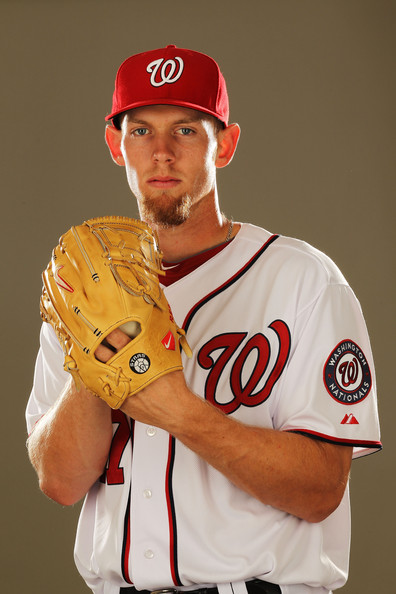


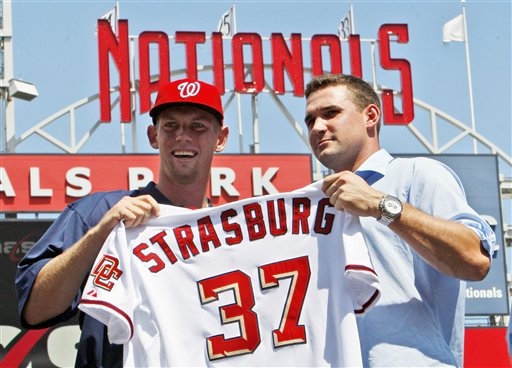

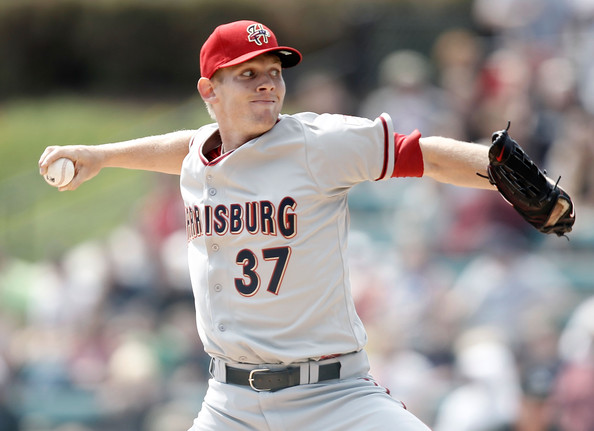
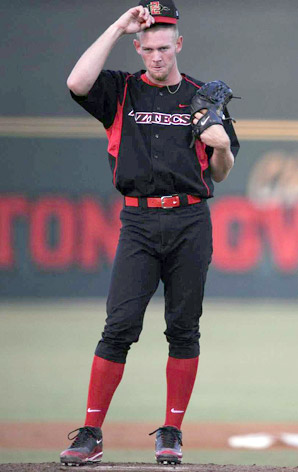

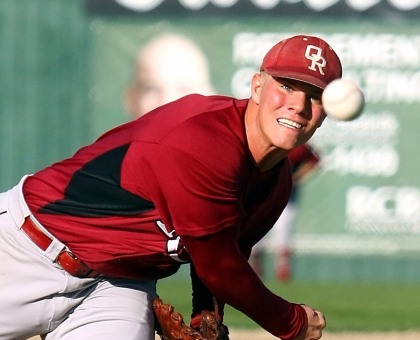
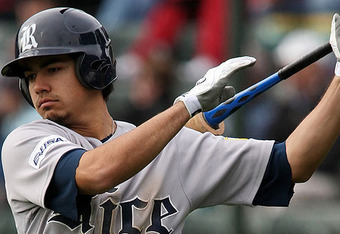

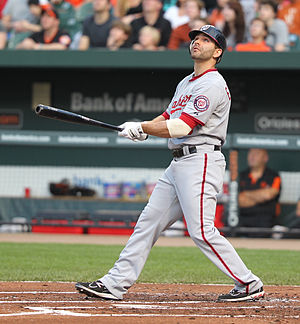



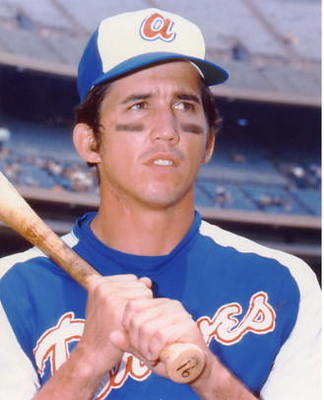


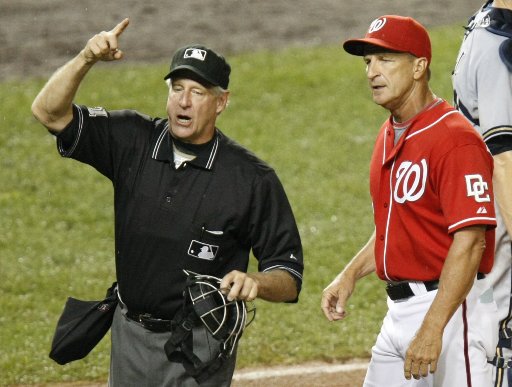

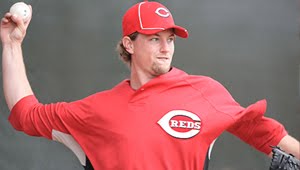
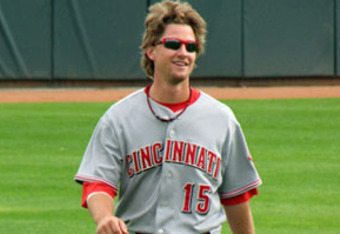

You must be logged in to post a comment.